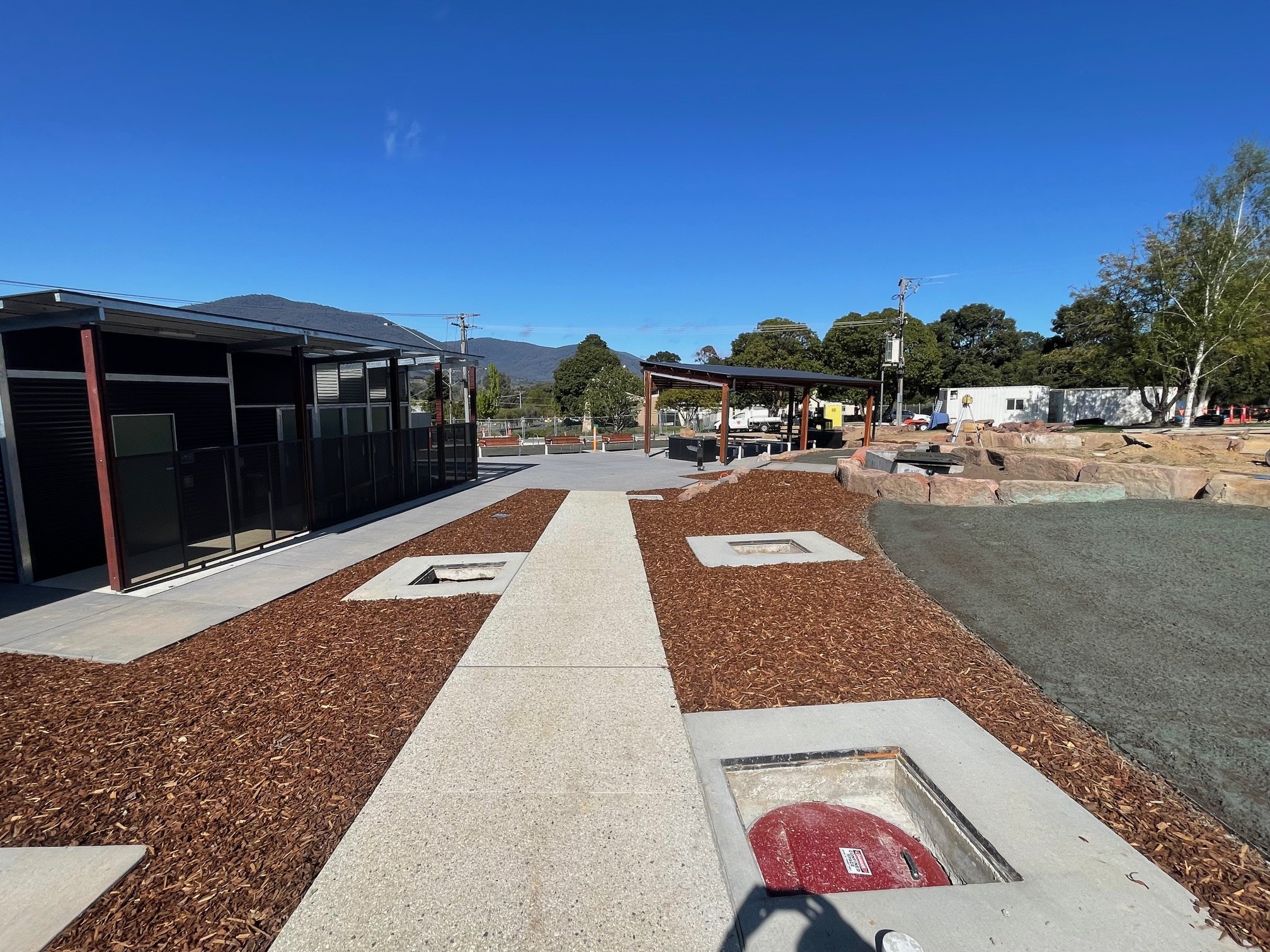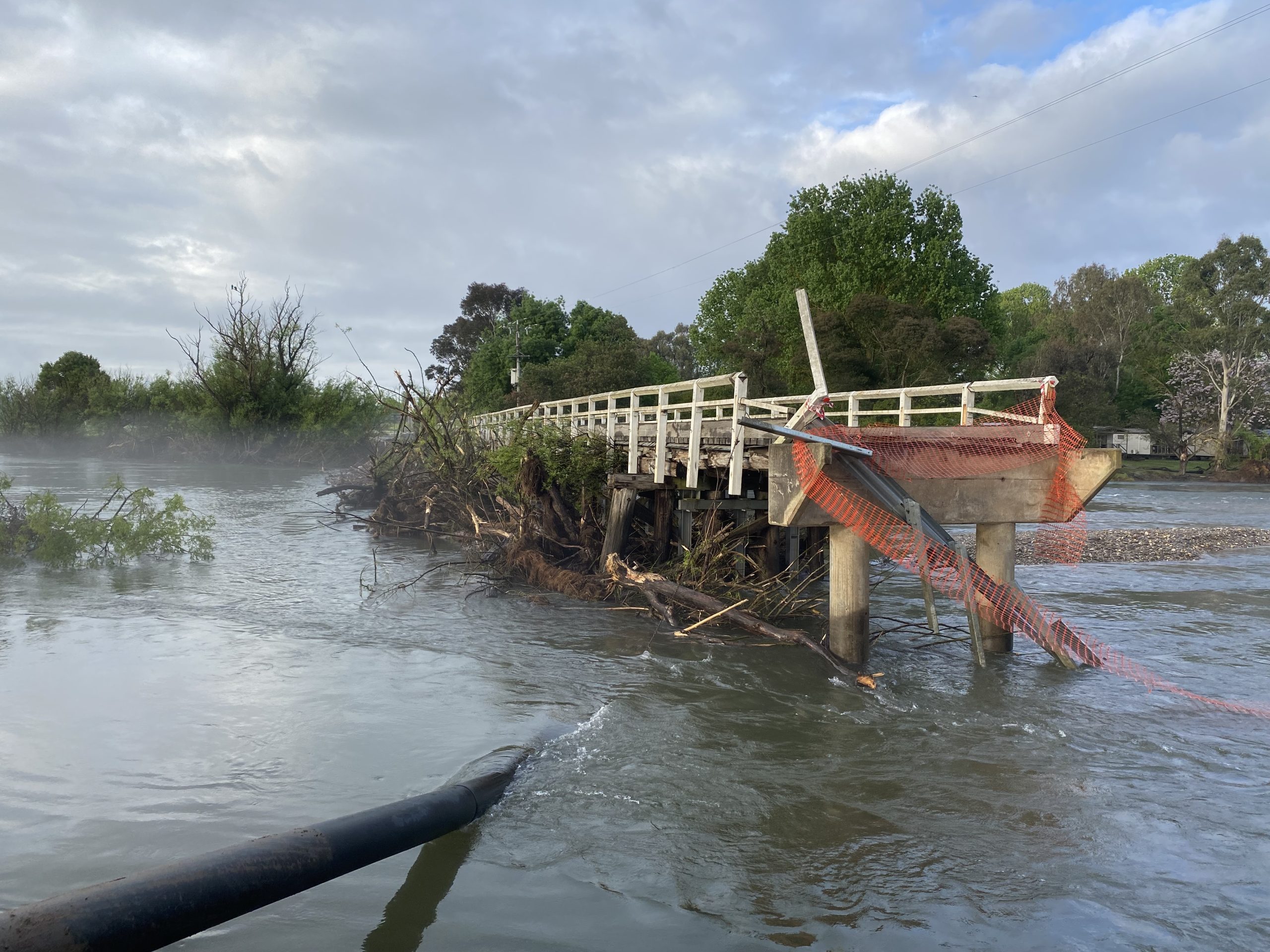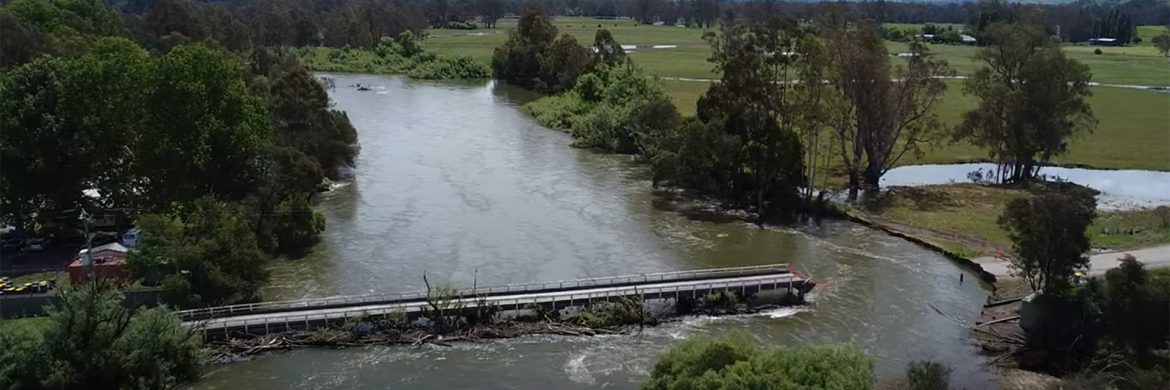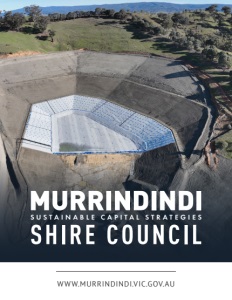Murrindindi Shire Council
Sustainable Capital Strategies
Redefining community development with the right initiatives
Murrindindi Shire Council is redefining community development with bold and innovative capital projects that will leave a lasting impact. By prioritising resilience, environmental sustainability, and quality of life, Council’s initiatives address immediate needs and position the region for long-term success. These efforts are powered by strategic collaboration with local businesses, government bodies, and community groups, ensuring each project leverages diverse expertise and shared resources.
Flood recovery in focus
Stuart Russell, Manager of Operations and Maintenance, provides a comprehensive overview of the flood recovery program, an essential initiative addressing the extensive damage caused by the 2022 and 2024 flood events. “Over the past two years, we’ve faced significant flooding events, the most notable one in October 2022,” Russell says. “These floods resulted in widespread damage, including 11.3 kilometers of roads and 123 assets on the road network. The estimated repair bill reached $30 million. Another major event in January 2024 damaged 6.5 kilometers of roads, bringing the total impact to 18 kilometers and 726 segments of various assets.”
The recovery program involves meticulously assessing damages and filing claims through the Disaster Recovery Funding Agreement (DRFA) with the Department of Transport. “We’re currently awaiting approvals for claims valued at just under $20 million,” Russell explains. “The process requires extensive documentation to substantiate claims, including pre-and post-damage data.”
Strengthening infrastructure resilience
Key components of the recovery efforts include upgrading culverts to meet current engineering standards and ensuring roads and other infrastructure are more resilient to future flooding. “Many of the damaged culverts were undersized,” Russell notes. “We’re working with the State Department of Transport to upgrade to 375-millimeter culverts as a minimum standard, improving the robustness of our infrastructure.”
Council’s collaborative approach with stakeholders has expedited recovery efforts. “We hold fortnightly meetings with our assessors at the Department of Transport to address concerns and expedite approvals,” Russell says. “This partnership ensures that we can be shovel-ready once claims are approved, minimising delays in repair works.”

Community engagement and transparency
Community engagement is also a critical element of the program. “The community has been understanding but cautious,” Russell emphasizes. “As a small rural council, we lack the financial capacity to undertake these repairs without funding assurances. It’s vital to ensure that all planned works are fully claimable to avoid significant financial exposure.”
Council has prioritised open communication with residents. Regular updates through public forums, newsletters, and Council’s website keep the community informed about progress and timelines. “Transparency is key,” Russell says. “We’re committed to keeping our residents in the loop as we navigate this lengthy and complex recovery process.”
Enhancing tourism and community experience
Peter Bain, Manager of Sustainability and Assets, discusses the ambitious Eildon Reserves Redevelopment, a project to enhance the region’s appeal as a tourist destination. “Lake Eildon attracts over a million visitors annually for activities such as water skiing, fishing, and boating,” Bain says. “The redevelopment in the Eildon township aims to encourage visitors to extend their stays, benefiting the local economy.”
The project primarily focuses on creating a family-friendly environment with state-of-the-art amenities. “We’ve built a regional-sized playground with elements catering to various age groups, including a splash park, skate park, and an all-abilities flying fox,” Bain explains. “These features aim to provide a unique and engaging experience for families, encouraging them to spend more time in the district.”
Balancing cost efficiency and quality
Overcoming financial challenges was a key aspect of the project. “Post-COVID cost increases posed a significant hurdle,” Bain notes. “We adopted a detailed cost-engineering approach in collaboration with our main contractor, Warrandale, and the Victorian Office of the State Architect. We achieved sizeable cost savings without compromising functionality by opting for modular, off-the-shelf designs instead of bespoke elements.”
The redevelopment has also embraced innovative solutions to maximise efficiency. “We worked closely with suppliers and contractors to optimise engineering components,” Bain explains. “This included rethinking hydraulics and other critical systems to ensure budget alignment while maintaining high-quality outcomes.”
Feedback fueling progress
The Eildon Reserves Redevelopment is expected to have a long-lasting impact on the local community and economy. The project supports local businesses and creates growth opportunities by attracting visitors and encouraging longer stays. “The feedback from the community has been overwhelmingly positive, and we’re excited to see the long-term benefits of this redevelopment,” Bain says. Despite challenges, the project is nearing completion. “We’ve managed to stay on budget and are addressing supply chain delays to ensure timely delivery,” Bain adds.
Carbon neutral by 2035
Among Council’s ambitious environmental initiatives, the Alexandra Landfill Cell Construction project is critical to achieving Council’s carbon net-neutrality by 2035. This transformative effort addresses current and legacy waste management challenges while setting a benchmark for sustainable practices.
A key project component involves closing and capping the existing landfill to mitigate harmful methane emissions, one of the most potent greenhouse gases. “Managing these emissions is critical to reducing our environmental impact,” says Bain. By implementing robust gas management systems, Council minimises emissions from historical waste and ensures compliance with modern environmental standards.
At the same time, the construction of a state-of-the-art landfill cell incorporates advanced technology to prevent methane leakage and enhance operational efficiency. “This cell is designed to operate sustainably from its first day, significantly reducing greenhouse gases and extending the landfill’s lifespan,” Bain adds.
Tackling legacy issues
Council addresses long-standing environmental challenges through innovative waste management strategies at the Alexandra landfill. The site includes an older landfill, now slated for closure and a new state-of-the-art cell under construction. “Half of the property is an old landfill that we are closing and capping to manage landfill gases, primarily methane,” explains Bain. “By controlling these emissions, we aim to significantly reduce carbon output and prevent methane from escaping into the atmosphere.”
The new landfill cell incorporates advanced gas management systems to ensure emissions are controlled immediately, effectively minimising environmental impact. Additionally, Council is investing in a forestry plantation to sequester residual carbon, furthering its commitment to carbon neutrality. “These efforts bring us very close to reaching our target to be net-carbon neutral by 2035, reflecting our broader environmental goals,” Bain states.

Future infrastructure and community projects
Looking ahead, Council remains focused on addressing the extensive damage caused by past floods while enhancing resilience to future events. Among the critical projects is replacing a historic 100-meter bridge in Acheron, lost to flooding. “This bridge has been a vital connection for our community, but given the extent of the damage, it will require innovative engineering to create a more robust replacement,” Bain explains. “We are currently negotiating funding for this significant undertaking.”
In addition to the bridge, Council is managing numerous flood-related damages across the region. “Being in the high country, we experience high-velocity floodwaters that cause widespread infrastructure damage,” Bain notes. Repairing these damages will be a multi-year effort requiring careful planning and prioritization.
Strengthening collaborative partnerships
Collaboration remains integral to Council’s approach to delivering impactful and cost-effective outcomes. “As a small council, we are very conscious of our resources and rely on strong relationships with suppliers, contractors, and funding bodies to maximize results,” Bain says. Open dialogue with partners helps Council overcome challenges while leveraging the experience and expertise of its collaborators.
Council also prioritises engaging with residents through workshops, public forums, community advisory groups, and digital platforms. These avenues allow community members to contribute ideas, share concerns, and provide feedback. “The relationships we build, whether with funding bodies or community members, are crucial for ensuring projects meet expectations and deliver long-term benefits,” Bain emphasizes.
Innovative solutions driving regional growth
Council is also exploring forward-thinking sustainability initiatives beyond its landfill improvements. These include developing renewable energy solutions, integrating solar technology into public infrastructure, and expanding green spaces to support biodiversity. Such initiatives complement existing projects, reinforcing Council’s position as a leader in environmental innovation.
Through transformative efforts like the Flood Recovery Program, the Eildon Reserves Redevelopment, and the Alexandra Landfill Cell Construction, Council demonstrates its dedication to strategic planning, sustainable growth, and community-focused solutions. “By innovating with our partners and aligning resources effectively, we ensure that every initiative benefits our community and paves the way for a resilient future,” Bain concludes.
AT A GLANCE
Murrindindi Shire Council
What: A local government authority in Victoria, Australia, overseeing a region known for its natural beauty, vibrant rural communities, and a commitment to sustainable growth and infrastructure development.
Where: Victoria, Australia
Website: www.murrindindi.vic.gov.au
PREFERRED VENDORS
Warrandale Industries – www.warrandale.com
Founded in 1962, Warrandale Industries has continued to grow and expand it’s operations for over 60 years establishing themselves as Victoria’s largest industry leader in Commercial Landscaping & Maintenance. Warrandale today specialises not only in landscaping but also Water Parks, Skate Parks, Pump Tracks, Sporting Fields, Bridge Construction and Wetlands.





 This information will never be shared to third parties
This information will never be shared to third parties